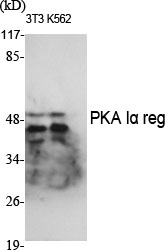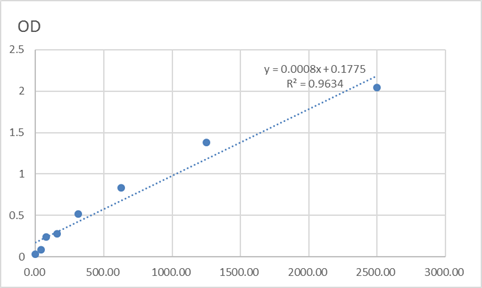Total PKA Iα reg Cell-Based Colorimetric ELISA Kit
- Catalog No.:KA3535C
- Applications:ELISA
- Reactivity:Human;Mouse;Rat
- Gene Name:
- PRKAR1A
- Human Gene Id:
- 5573
- Human Swiss Prot No:
- P10644
- Mouse Swiss Prot No:
- Q9DBC7
- Rat Swiss Prot No:
- P09456
- Storage Stability:
- 2-8°C/6 months
- Other Name:
- cAMP-dependent protein kinase type I-alpha regulatory subunit (Tissue-specific extinguisher 1) (TSE1)
- Detection Method:
- Colorimetric
- Background:
- disease:Defects in PRKAR1A are the cause of Carney complex type 1 (CNC1) [MIM:160980]. CNC is a multiple neoplasia syndrome characterized by spotty skin pigmentation, cardiac and other myxomas, endocrine tumors, and psammomatous melanotic schwannomas.,disease:Defects in PRKAR1A are the cause of intracardiac myxoma [MIM:255960]. Inheritance is autosomal recessive.,disease:Defects in PRKAR1A are the cause of primary pigmented nodular adrenocortical disease type 1 (PPNAD1) [MIM:610489]. Primary pigmented nodular adrenocortical disease is a rare bilateral adrenal defect causing ACTH-independent Cushing syndrome. Macroscopic appearance of the adrenals is characteristic with small pigmented micronodules observed in the cortex. PPNAD1 is most often diagnosed in patients with Carney complex, but it can also be observed in patients without other manifestations or familial history.,PTM:The pseudophosphorylation site binds to the substrate-binding region of the catalytic chain, resulting in the inhibition of its activity.,similarity:Belongs to the cAMP-dependent kinase regulatory chain family.,similarity:Contains 2 cyclic nucleotide-binding domains.,subunit:The inactive form of the enzyme is composed of two regulatory chains and two catalytic chains. Activation by cAMP produces two active catalytic monomers and a regulatory dimer that binds four cAMP molecules. PRKAR1A also interacts with RFC2; the complex may be involved in cell survival. Interacts with AKAP4.,tissue specificity:Four types of regulatory chains are found: I-alpha, I-beta, II-alpha, and II-beta. Their expression varies among tissues and is in some cases constitutive and in others inducible.,
- Function:
- formation of primary germ layer, mesoderm formation, regulation of protein amino acid phosphorylation, regulation of transcription, DNA-dependent, regulation of transcription from RNA polymerase II promoter, intracellular signaling cascade, gastrulation, mesoderm development, response to endogenous stimulus, response to hormone stimulus,hormone-mediated signaling, response to organic substance, regulation of phosphate metabolic process, regulation of protein modification process, activation of protein kinase activity, regulation of cellular protein metabolic process,cellular response to hormone stimulus, positive regulation of kinase activity, activation of protein kinase A activity,regulation of phosphorylation, positive regulation of catalytic activity, regulation of kinase activity, positive regulation of molecular function, regulation of transcription, regulation of protein kinase ac
- Subcellular Location:
- Cell membrane .
- Expression:
- Four types of regulatory chains are found: I-alpha, I-beta, II-alpha, and II-beta. Their expression varies among tissues and is in some cases constitutive and in others inducible.
- June 19-2018
- WESTERN IMMUNOBLOTTING PROTOCOL
- June 19-2018
- IMMUNOHISTOCHEMISTRY-PARAFFIN PROTOCOL
- June 19-2018
- IMMUNOFLUORESCENCE PROTOCOL
- September 08-2020
- FLOW-CYTOMEYRT-PROTOCOL
- May 20-2022
- Cell-Based ELISA│解您多样本WB检测之困扰
- July 13-2018
- CELL-BASED-ELISA-PROTOCOL-FOR-ACETYL-PROTEIN
- July 13-2018
- CELL-BASED-ELISA-PROTOCOL-FOR-PHOSPHO-PROTEIN
- July 13-2018
- Antibody-FAQs



